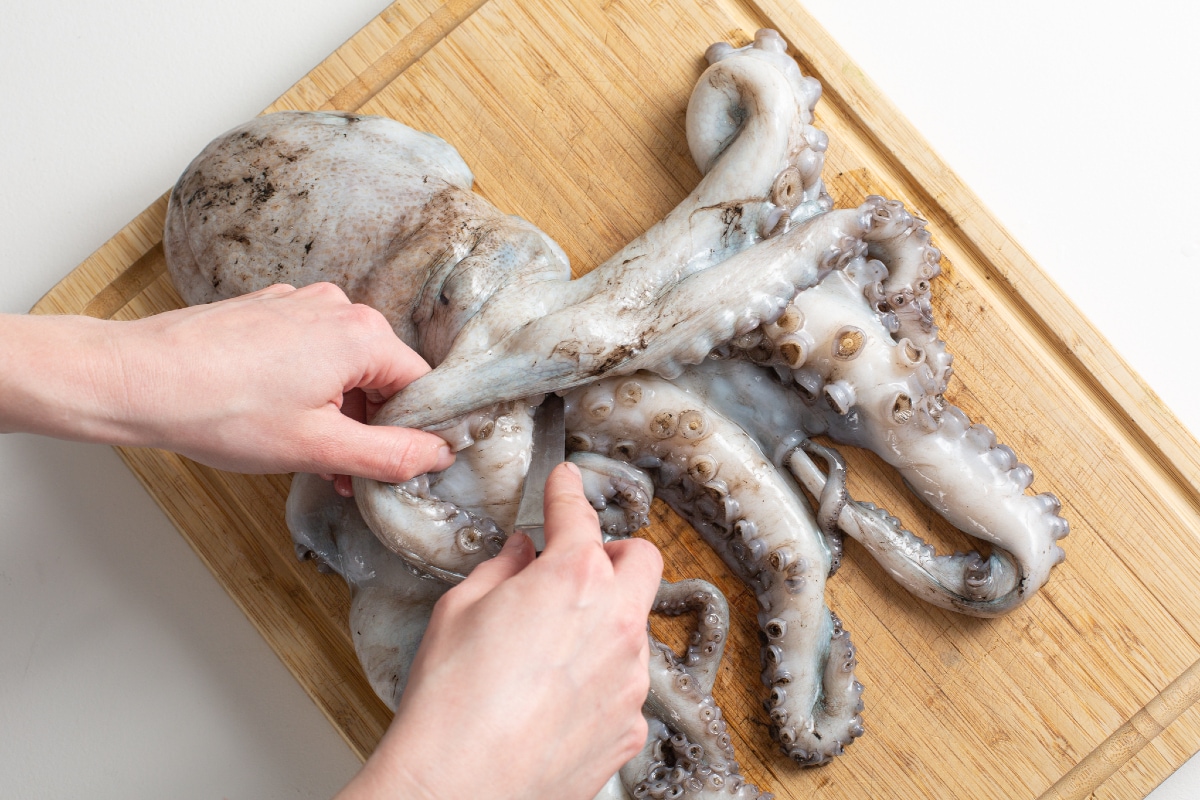Octopus and potato salad
- Easy
- 1 h 25 min
- Kcal 98


Octopus recipes are numerous, colorful, and delicious, enhancing our table from appetizers to main courses! But how do you clean and cook octopus? We want to show you all the tricks to choose, clean, and cook this mollusk. Let's start with the selection: to ensure the octopus is fresh, its skin and eyes should appear shiny and bright, not dull. When buying, it's good to check if the octopus has already been tenderized. If not cleaned, don't worry! We explain step by step two techniques for easily cleaning it at home, both before and after cooking! We also show you two methods for cooking it, one the classic boiling method and the other dry: the octopus will cook in its own water. This article has everything you need to become experts in preparing octopus, impressing your guests with exquisite and refined dishes. Don't miss the chance to learn all the secrets of this sea delicacy!
Discover our best octopus recipes:

To clean the raw octopus, first wash it under water. Rinse the suction cups well as they may contain sand and other residues 1. Now turn the head inside out by pushing it with your thumbs, trying not to break the internal sac 2. Remove it using a small knife, cutting all around 3.

Rinse the inside of the head well 4, then transfer the octopus to a cutting board. Pat it dry with paper towels 5. Using a small knife, cut around the eyes without puncturing them 6.

Gently extract it 7 and flip the octopus. In the center of the tentacles is the beak; cut around it with a small knife 8 and extract it with your hands 9.

To clean the cooked octopus, remember that the sac should be removed before cooking, as shown earlier. Once cooked, drain it well and transfer it to a cutting board. Using a small knife, cut the eye area 11 and remove it 12.

Flip the octopus, and with the tip of a small knife, cut the center of the tentacles 13 to easily extract the beak 14. The octopus is clean 15 and ready to use in your recipes! If you want, you can remove the skin by rubbing the tentacles with a paper towel; it will easily come off.

To cook the octopus dry, place it in a pot 16. Add carrot, onion, celery 17, and a few bay leaves 18. We recommend not adding salt.

Cover with a lid 19 and cook over medium-low heat. For every 1.1 lbs (500 g) of octopus, it will take 20-25 minutes of cooking 20. To check if it's done, you can poke it with a fork; if it's tender but still firm and not chewy, it means it's ready 21.

To cook the octopus in water, you need to boil it. Fill a large pot with water and add celery, carrot, onion, and bay leaves 22. Bring to a boil, then, holding the octopus by the head, dip the tentacles into the water, wait a few seconds, and lift the octopus out of the water again 23. Repeat this operation 3-4 times; it will help curl the tentacles 24.

Fully submerge the octopus in water 25 and let it boil. It will take 20 minutes of cooking for every 1.1 lbs (500 g) of octopus. Impurities may rise to the surface; you can remove them using a skimmer. When it is tender but still firm, drain the octopus from the water 26, transfer it to a cutting board, and use it in your recipes 27.